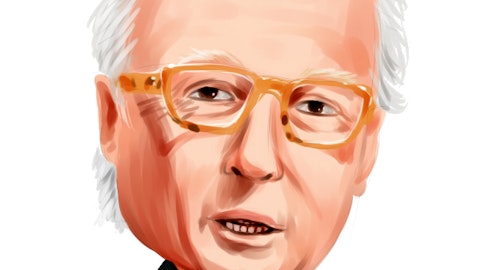Davis Holcombe : Excellent, thank you. I’ll go ahead and turn it over.
Howard Friedman: Thank you.
Operator: [Operator Instructions] Our next question comes from a line of Mitch Pinheiro with Sturdivant. Your line is open.
Mitch Pinheiro: Yeah, hey, good morning.
Howard Friedman: Good morning.
Mitch Pinheiro: Hey, here at the tail end, most of my questions have been asked and answered, but I did have two. I was just curious if you could, Howard, if you could sort of prioritize the white space opportunities that you refer to, whether it’s geographic or product or channel. I’m very curious about that?
Howard Friedman: Yeah, look, I think from a geography perspective, we are continuing to move westward, right? So we’ve had a lot of success with the acquisition that we had in sort of the upper Midwest. And we are continuing to build out around Chicago, Indiana, Michigan, kind of the normal areas there. We’ve seen great performance there and we continue to be bullish. We’ve talked a lot about Publix, which has been obviously a great success for us and we continue to be grateful for the partnerships we’re getting from retailers, but Florida still is a geography where we have continued opportunities to do it. To your point, whether you call it geography or you call it a channel question, I think is one that we can debate a little bit, but Florida, broadly speaking, still remains an opportunity as a maturing market.
And then, look, I do think that when you think about channel shifting and you think about where the shopper is, unmeasured channels and value, dollar stores, discounters, mass merch, we have a lot of opportunities still. That’s our core items being penetrated and servicing those retailers the way we need to. The relationships are there, the product is there, we need to continue to demonstrate the value that we create and continue to drive them. So I’d kind of give you those two geographies and then I would say, broadly speaking, channel expansion are places where I think we feel that there’s quite a bit of upside and headspace for us, especially in an environment which remains dynamic.
Mitch Pinheiro: Okay, thank you for that. And then just one last question, so when you get down to 13 manufacturing plants from 17, what type of, I don’t know, what kind of measurement in terms of capacity utilization will you have? I mean, how significant of an improvement is it? I know you’ve done some expansion to your capacity, but I’m curious, just getting from 17 to 13, when you’re sort of fully optimized, what kind of utilization that represents?
Howard Friedman: Yeah, a couple — so I would tell you that it’s really a modest improvement. If you think about some of the geographies, some of the plants that we’re talking about, Birmingham was a plant that would have required a significant amount of investment in order for us to be able to be in a good place, so that volume, while it was not immaterial to our network, was absorbed fairly easily into our network with the execution opportunities that we’ve obviously talked about, accepted. But the three plants that we’re talking about are relatively modest in terms of their overall size and impact. I think we have further opportunity to, not only in our ways of working, but in our physical footprint, to understand how to make sure that we have the capacity we need to grow but we have a fair bit of head space still in our OEE measures to go as we continue to work on continuous improvement, capital expansion, Kings Mountain is still in front of us.
There’s a lot of opportunity yet in our network to be able to meet and exceed the consumer demand.
Mitch Pinheiro: Okay. Thank you for that. Thank you.
Howard Friedman: Thank you, Mitch.
Ajay Kataria : Thanks, Mitch.
Operator: And that’s all the questions we have. I’ll turn the call over to management for closing remarks.
Howard Friedman: Yeah, so obviously we feel pretty good about the numbers that we delivered. We certainly understand that the expectations have been revised, but look, I could not be more excited or confident in the future of this business. I think we continue to be in probably the best category in the entire market, relatively and absolute. We have a lot of geographic opportunities yet to go, and we have a lot of opportunities to continue to build our brands and grow our business. I look forward to seeing all of you in December at our Investor Day and look forward to speaking in more detail as we go. So thanks for your time and have a great day.
Operator: Ladies and gentlemen, that concludes today’s call. Thank you all for joining, you can now just disconnect.
Follow Utz Brands Inc. (NYSE:UTZ)
Follow Utz Brands Inc. (NYSE:UTZ)
Receive real-time insider trading and news alerts


